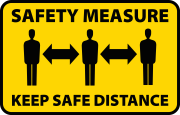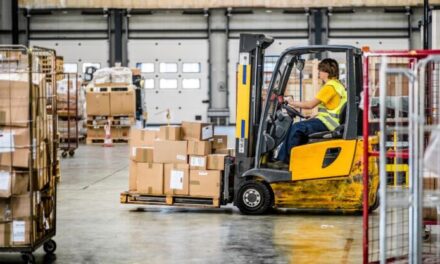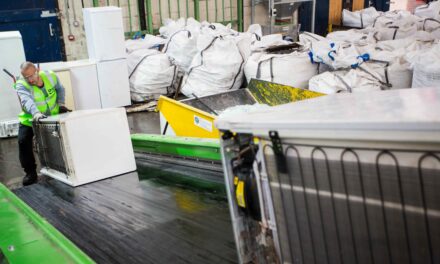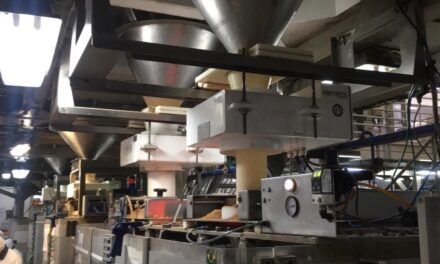Getting businesses back up and running is critical to the UK economic recovery, however, there is a significant disconnect between employers and employees on how this is working out. UK digital health and therapeutics company Huma (formerly known as Medopad) asked 5,000 UK workers and 2,000 UK employers about their views on returning to work.
Employers viewpoint
Businesses are planning to return to work. Almost half (45%) of workplaces will be ready to accommodate staff back in the office before the end of August. However, a fifth (19%) will only be ready in the first half of 2021. Of the business that are already up and running, almost two-fifths (38%) of their employees are going to a physical workplace, with the majority working at least 4 days from there.
Employers reported spending £674m every month to ensure a safe workplace for their employees (£58.55 on average per employee per month). They have rushed to put in place various plans and procedures to ensure a safe workplace, ranking new hygiene protocols, socially distant layouts and staggered work shifts among their top changes. Worryingly, only one in five businesses feel suitably informed on the exact policies / procedures they need to have in place to ensure a safe working environment for their employees.
Most employers believe that it is the responsibility of employees to self-report health concerns citing resource constraints. However, the overwhelming majority (70%) are willing to pay for COVID-19 tests should an employee request one. Importantly, employers fear the biggest disruption to restarting their business operations will be the willingness of more staff to return to the workplace owing to safety concerns.
Workers viewpoint
Over half of workers (54%) are reluctant to return to work fearing they will unknowingly contract COVID-19 and mistakenly pass it to friends and family at home. Bosses have offered a host of incentives to encourage employees back to work. The top ranked bung made has been extra holidays, free lunches at work and paying for commuting costs.
Of the employees who have returned to work, over half (57%) are not confident with the measures in place to ensure their safety and well being. The same applies to people who have not returned to work yet. This is possibly why almost a third (29%) felt their health and safety would be compromised in the workplace.
Employees ranked interactions with commuters (29%), co-workers (24%) and being in meetings (23%) as the top risk factors to catching COVID-19. The workplace ranked as lowest risk (8%).
Solution
The research identified two insights, if acted on quickly could enable businesses to get up and running faster and accelerate the economic recovery.
Firstly, addressing the ‘people interaction’ concern of workers. Both employees and bosses are willing to track their health for COVID-19 symptoms providing them with a peace of mind over their well-being. Overwhelmingly, two-thirds (67%) of employees would be willing to do a daily symptom check-in with their employers and the majority (71%) would be comfortable with employers tracking their symptoms. Moreover, nine in ten businesses (88%) are comfortable with monitoring and tracking their employees’ symptoms to ensure a safe workplace environment for everyone. However, they don’t have the means to do it themselves and will encourage employees to self-report on symptoms.
Secondly, employers are not talking to their staff. Only a quarter (24%) of employees felt fully informed about the new safety protocols and procedures at their workplace. Similarly, only a quarter (24%) of businesses prioritised communicating these changes to their employees.
Dan Vahdat, founder and CEO of Huma, commented: “There seems to be a breakdown of communication between employers and employees and this is leading to some unrest and possibly delaying the economic recovery. Trust building is now more critical than ever.
“Meanwhile, bosses are spending millions and feel they are doing a lot to ensure their workplace is a safe environment for staff but they are more concerned about people interaction than the actual workplace. The common ground on monitoring and tracking the health and well being of people in the workplace seems to be the solution. Employees are comfortable with this and employers are up for it but lack of resources means they are relying on workers to self-report on symptoms.”
“We are driving the adoption of digital remote monitoring solutions to help users be better informed and engaged in their health concerns. In the workplace, Huma Health Shield is a revolutionary app that gives employees greater knowledge and control over their health at work. The solution encourages employees to confidentially track vital signs, and their exposure risk, so they can better manage their health. This hasn’t started with COVID-19 and won’t end once a vaccine is found, I believe the work being done now will set in motion behaviours that will transform how people manage their health and wellbeing.”



